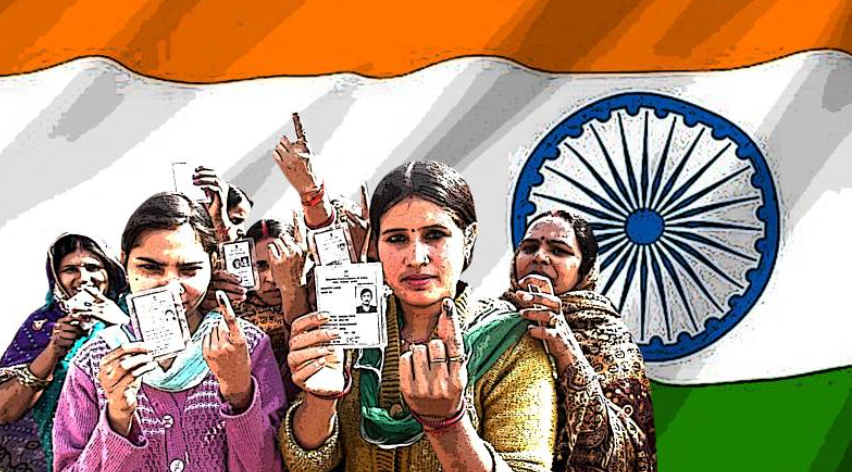The Issue of Institutional Violence (GS Paper 2, Polity)

Introduction: A Stark Dichotomy
- India’s democratic engagement is unparalleled, with over 642 million voters, more than half of whom are women.
- Despite this extensive participation, issues like women’s safety and gender-based violence are notably absent from electoral agendas.
- This gap underscores a critical disconnect between the high level of democratic involvement and the inadequate political focus on addressing violence against women.
- Daily, approximately 90 rapes are reported, and nearly 50% of women experience domestic violence, yet these issues remain under-addressed by political candidates and largely overlooked by voters.
The Reality of Gender-Based Violence
- Gender-based violence is often misconceived as solely the result of intimate partner violence, an issue that politicians may feel unequipped to tackle.
- However, institutional violence against survivors—such as biased police treatment and inefficient judicial processes—often exacerbates the trauma beyond the initial act of violence.
- A 2019 report by the Abdul Latif Jameel Poverty Action Lab (J-PAL) found that 39% of Indian police officers view gender-based violence complaints as baseless, perpetuating a cycle of mistrust and further victimizing survivors.
Barriers to Justice
- Many women only pursue justice when their circumstances become untenable, influenced by societal pressures and limited options.
- India’s low divorce rate of 1% reflects the societal stigma surrounding divorce and the constraints faced by women.
- Furthermore, 77% of women remain silent about their experiences of violence, even to close family members.
- Institutional barriers, such as those experienced by organizations like Samarthya, show that police often dismiss complaints or use jurisdictional issues to avoid action.
Additional Challenges in Rural India
- In rural areas, access to justice is further obstructed by the male and upper-caste dominance in local panchayats (village councils).
- Survivors from marginalized communities, including Dalits, face additional challenges related to caste discrimination, literacy, and geographic isolation.
- The backlog of 40 million court cases exacerbates these problems, particularly affecting survivors of gender-based violence and complicating their pursuit of justice.
Need for Survivor-Centric Reforms
- To address institutional violence effectively, there is a need for survivor-centric reforms.
- Social impact organizations are working to train police and judicial officials in trauma-informed practices that prioritize the needs of survivors.
- For instance, Vanangna in Bundelkhand provides a model for training officials in women-centric and survivor-focused methods.
- Involving survivors from marginalized communities in designing and validating justice systems is crucial to ensure they are fair and effective.
Strong Laws, Weak Implementation
- India has established strong domestic violence laws, but their implementation remains inadequate due to official biases and outdated practices.
- Many officials reflect societal norms that condone violence, emphasizing the need for comprehensive reform of justice institutions.
- These reforms should focus on adopting trauma-informed practices and ensuring that justice systems are supportive and healing for survivors.
Importance of Data and Public Discourse
- The lack of comprehensive data on gender-based violence and institutional failures exacerbates the problem.
- Without accurate data, it is challenging to understand and address the full extent of injustice.
- Recent updates to criminal law procedures aim to enhance timeliness and access through digital means, but effective gender-sensitive training and evaluation are essential to ensure a trauma-informed approach.
Call to Action for Voters and Politicians
- Voters and politicians have a crucial role in addressing gender-based violence.
- By prioritizing women’s safety and violence against women in political agendas, they can drive significant change.
- The success of government campaigns for girls’ education illustrates that national shifts are possible when issues are actively spotlighted.
- Voters must demand rights and push for changes that ensure women’s safety and dignity, while politicians should incorporate these issues into their platforms and enact supportive policies.
Conclusion
- Addressing institutional violence and gender-based violence in India requires a concerted effort from all sectors of society.
- While strong laws exist, their effectiveness depends on comprehensive implementation and societal commitment to change.
- By adopting survivor-centric reforms, tackling systemic barriers, and fostering a culture of accountability, India can advance towards a more equitable society where women’s safety and dignity are upheld as fundamental rights.
- This requires not only legislative and institutional reforms but also a shift in societal attitudes to ensure that survivors are supported and justice is achieved.


